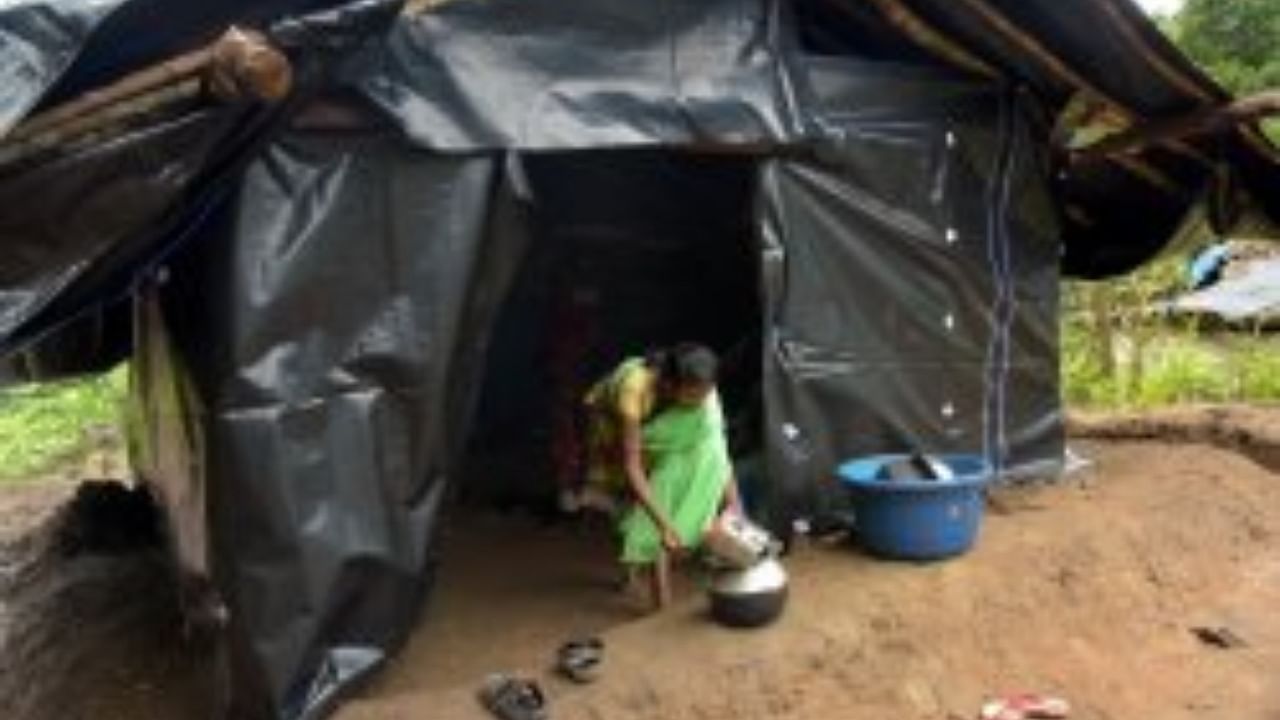
Jothana Soma Siddi (25), a farmer from Jadaginakoppa hamlet in Yellapur taluk’s Manchikeri village, is all set to elect his MLA for the third time in the last five years.
The Yellapur seat saw a byelection in 2019 after Shivaram Hebbar resigned as MLA and switched sides from Congress to BJP to help the saffron party form the government.
However, he has little hope that his vote will make any real difference to his or his hamlet’s fortunes.
“Neither elected representatives nor government schemes reach our village. So, we do not take Assembly and Lok Sabha polls seriously. We vote because we have to vote,” he says.
Nearly 140 km away in the Bhimgad wildlife sanctuary, Shreya and her husband Shankar Naik have, for the last four decades, been demanding a permanent bridge across three rivulets at Krishnapur village in Khanapur taluk, Belagavi.
“During every election, candidates come to our village and promise us the bridge. But so far, none of them has fulfilled our demand. We have tried every party and candidate, and all turn out to be the same — indifferent to our plight,” says Shreya.
No rations
Krishnapur village has more than 200 families. “For the last 10-12 monsoons, we have not received rations from the government. There is no school here and we have to carry patients on bikes for 45 km (to Khanapur) to get medical care,” says Shankar.
An overwhelming majority of tribal communities and forest dwellers who DH interacted with expressed similar hopelessness about elected representatives.
Inclusion in ST list
Apart from basic requirements, the members of the oppressed communities are also fighting for issues such as land rights under the Forest Rights Act 2006, inclusion of some communities in the ST list and internal reservation.
According to the 2011 census, Karnataka is home to more than 42.48 lakh tribal people belonging to 50 tribes distributed across 14 districts. Tribal communities comprise 6.9 per cent of the state’s total population.
Representation low
Experts say as the population of tribal people is distributed across the state, they do not form a vote bank for any party.
Sparing the dominant Valmiki Nayak community in the arid region of Ballari, Raichur, Vijayapura and Chitradurga districts, which account for 11 of the 12 Assembly seats reserved for STs in the state, hardly any of the other tribal communities has been represented in the legislature over the last 70 years.
“Our demands hardly reach the halls of Assembly or Council as there are no uniform voices, and our members do not form a consolidated constituency. The government is formulating several forest policies and projects without taking our concerns into account,” says C Made Gowda, a Soliga from BR Hills in Chamarajanagar district.
On paper, the government has been encouraging the rehabilitation of forest dwellers to non-forest areas.
Displaced sans education
However, Made Gowda points out that communities are being displaced without providing them necessary skills and education to help them adjust to the outer world.
“A majority of the 116 Girijana Ashrama Shales in the state do not have qualified and permanent teachers. Without education, if we go out of the forest, we will not be able to survive,” he says.
Internal reservation
He adds that increasing reservation for tribal people will not help unless internal reservation is implemented to include all indigenous communities.
The state government recently increased the reservation for ST communities from 3 per cent to 7.5 per cent.
Jayanand Dereker, the first member from the Kunbi community to get a doctorate, says they have been fighting to include the tribe in the ST list for the last 32 years. Yet, their fight has not succeeded.
The issue of ‘Kumbri land’ — a patch of forest land the community has been cultivating for several centuries — remains unresolved. The tribe’s demand for the title deeds of the land has remained unmet as successive governments have kept the issue pending, adds Dereker.
“In spite of cultivating land for several decades, we are still not owners of these lands,” says Mohan Siddi, a social worker at Kalleshwar village in Yellapur.
In land records, these fields are still identified as ‘forest’ areas, explains Siddi.
“As farm labourers, we are not eligible for any government schemes, including subsidies and crop insurance,” he adds.
Two wheels of development
There is one thing clear in the minds of the tribal community: Their demands will not be fulfilled unless they become politically strong. However, with hardly any party fielding a tribal candidate outside reserved constituencies, the prospects do not seem bright.
The first MLC from the Siddi community, BJP’s Shantaram Siddi, says if the administration is one wheel of development, the second wheel is the people.
He is grateful to the BJP for giving him the opportunity to become MLC, but says, “I have to consider my position in my party and its stance on certain issues. I cannot cross those lines. But my party has taken several steps that have benefited the tribal people.”